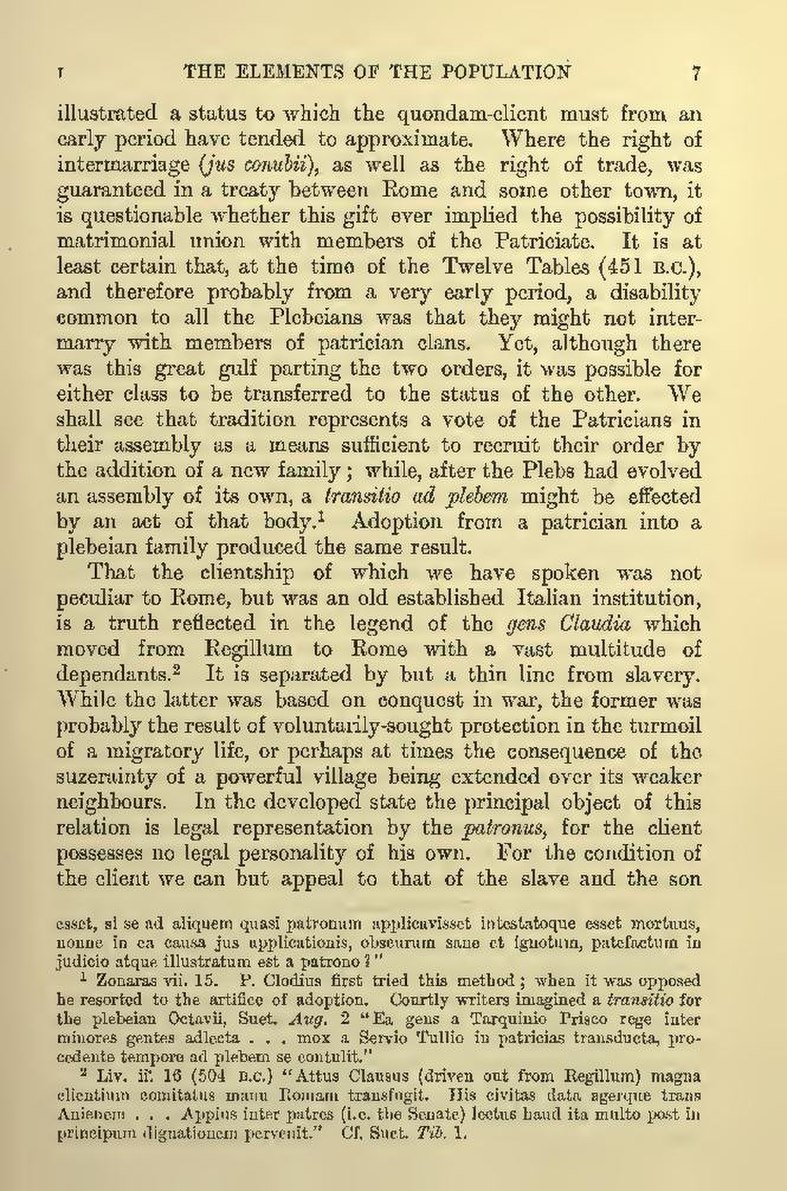illustrated a status to which the quondam-client must from an early period have tended to approximate. Where the right of intermarriage (jus conubii), as well as the right of trade, was guaranteed in a treaty between Rome and some other town, it is questionable whether this gift ever implied the possibility of matrimonial union with members of the Patriciate. It is at least certain that, at the time of the Twelve Tables (451 B.C.), and therefore probably from a very early period, a disability common to all the Plebeians was that they might not intermarry with members of patrician clans. Yet, although there was this great gulf parting the two orders, it was possible for either class to be transferred to the status of the other. We shall see that tradition represents a vote of the Patricians in their assembly as a means sufficient to recruit their order by the addition of a new family; while, after the Plebs had evolved an assembly of its own, a transitio ad plebem might be effected by an act of that body.[1] Adoption from a patrician into a plebeian family produced the same result.
That the clientship of which we have spoken was not peculiar to Rome, but was an old established Italian institution, is a truth reflected in the legend of the gens Claudia which moved from Regillum to Rome with a vast multitude of dependants.[2] It is separated by but a thin line from slavery. While the latter was based on conquest in war, the former was probably the result of voluntarily-sought protection in the turmoil of a migratory life, or perhaps at times the consequence of the suzerainty of a powerful village being extended over its weaker neighbours. In the developed state the principal object of this relation is legal representation by the patronus, for the client possesses no legal personality of his own. For the condition of the client we can but appeal to that of the slave and the son
- [Footnote: esset, si se ad aliquem quasi patronum applicavisset intestatoque esset mortuus,
nonne in ea causa jus applicationis, obscurum sane et ignotum, patefactum in judicio atque illustratum est a patrono?"]
- ↑ Zonaras vii. 15. P. Clodius first tried this method; when it was opposed he resorted to the artifice of adoption. Courtly writers imagined a transitio for the plebeian Octavii, Suet. Aug. 2 "Ea gens a Tarquinio Prisco rege inter minores gentes adlecta . . . mox a Servio Tullio in patricias transducta, procedente tempore ad plebem se contulit."
- ↑ Liv. ii. 16 (504 B.C.) "Attus Clausus (driven out from Regillum) magna clientium comitatus manu Romam transfugit. His civitas data agerque trans Anienem . . . Appius inter patres (i.e. the Senate) lectus haud ita multo post in principum dignationem pervenit." Cf. Suet. Tib. 1.
